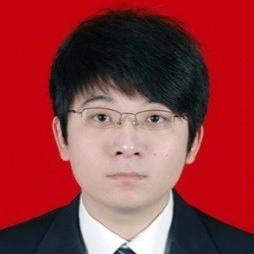Removal of Micropollutants in Water
A special issue of Water (ISSN 2073-4441). This special issue belongs to the section "Wastewater Treatment and Reuse".
Deadline for manuscript submissions: closed (20 March 2024) | Viewed by 3884
Special Issue Editors
2. Department of Pharmaceutical and Pharmacological Sciences, Pharmaceutical Analysis, KU Leuven, Herestraat 49, 3000, Leuven, Belgium
Interests: advanced oxidation processes (AOP); wastewater treatment; photocatalysis; catalysts; environmental catalysis
Special Issues, Collections and Topics in MDPI journals
Interests: oxide catalysts; electrocatalysis; environmental catalysis
Special Issues, Collections and Topics in MDPI journals
Interests: catalytic ozonation; industry wastewater treatment; organic micro-pollutants (OMPs); advanced oxidation processes (AOP); microplastics (MPs); ozone
Special Issue Information
Dear Colleagues,
With the rapid development of industry on a global scale, organic pollutants are being increasingly released into the environment. The presence of recalcitrant and emerging micropollutants in the environment (such as pharmaceuticals, personal care products, etc.) has potential negative impacts on human health and ecosystems. Therefore, wastewater treatments are of the utmost importance. Among them, low-cost, high-efficiency, environmentally friendly, and sustainable water and wastewater treatment techniques have a high application potential.
This Special Issue welcomes original research papers and reviews on the removal of pollutants from (waste)water, involving novel methods and new materials in various aspects of wastewater treatment.
Subject areas may include but are not limited to:
- Advanced oxidation process;
- Photocatalysis;
- Electrocatalysis;
- Membrane process;
- Application of metallic and non-metallic materials;
- Production of by-products during wastewater treatment;
- Removal of refractory organic pollutants in water;
- New water treatment technology.
Dr. Xi Zhang
Dr. Ning Han
Dr. Siyu Zhang
Guest Editors
Manuscript Submission Information
Manuscripts should be submitted online at www.mdpi.com by registering and logging in to this website. Once you are registered, click here to go to the submission form. Manuscripts can be submitted until the deadline. All submissions that pass pre-check are peer-reviewed. Accepted papers will be published continuously in the journal (as soon as accepted) and will be listed together on the special issue website. Research articles, review articles as well as short communications are invited. For planned papers, a title and short abstract (about 100 words) can be sent to the Editorial Office for announcement on this website.
Submitted manuscripts should not have been published previously, nor be under consideration for publication elsewhere (except conference proceedings papers). All manuscripts are thoroughly refereed through a single-blind peer-review process. A guide for authors and other relevant information for submission of manuscripts is available on the Instructions for Authors page. Water is an international peer-reviewed open access semimonthly journal published by MDPI.
Please visit the Instructions for Authors page before submitting a manuscript. The Article Processing Charge (APC) for publication in this open access journal is 2600 CHF (Swiss Francs). Submitted papers should be well formatted and use good English. Authors may use MDPI's English editing service prior to publication or during author revisions.
Keywords
- (waste)water treatment
- emerging contaminants
- advanced wastewater treatment
- catalyst
- pollutants removal







